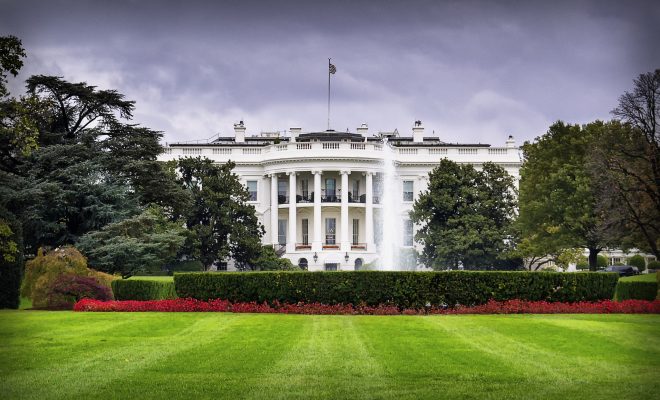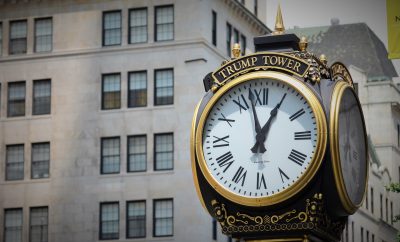 "White House" courtesy of Diego Cambiaso via Flickr: License (CC BY-SA 2.0)
"White House" courtesy of Diego Cambiaso via Flickr: License (CC BY-SA 2.0)
Politics
White House Press Briefings Still Off the Air
On Wednesday, during the White House press briefing, one reporter secretly challenged the standing “no streaming audio or video” rule. Ksenija Pavlovic, founder of the independent news blog Pavlovic Today, used the Periscope app to share the audio of the briefing. She then tweeted a link to the feed:
Join "Audio-only" live streaming of the White House #PressBriefing with Sarah H. Sanders https://t.co/kWRyf4wbAq
— K. Pavlovic (@ksenijapavlovic) July 19, 2017
The feed cut after about 17 minutes, but Pavlovic then tweeted a second link to a 31-minute-long stream. So far, response to the streams has been largely supportive, with social media lauding Pavlovic and lambasting the White House’s restrictive policy.
Thank you for your courage. The White House does not belong to Trump, or any president. It is the people's house. Sanders, et al work for us
— S (@Yes_Its_Me_S) July 19, 2017
https://twitter.com/Elissa_Malcohn/status/887798153361203206
There hasn’t been an on-camera White House press briefing since June 29. Prior to that, Press Secretary Sean Spicer began spending less time in front of reporters, with Deputy Press Secretary Sarah Huckabee Sanders giving the briefings from June 26 to July 18. President Trump has only had one solo press conference in the six months since he took office. He has been in 10 joint press conference with foreign leaders, but those events typically allow only two questions per leader. In addition, according to CNN, the president has not had a sit-down on-camera interview with any news station other than Fox News or the Christian Broadcasting Network in over two months. Clearly, press communication is not this administration’s priority.
Spicer, however, insists that there is a reason for it. “There are days that I’ll decide that the president’s voice should be the one that speaks and iterate his priorities,” he said during the June 19 “gaggle” (which is this administration’s term for the informal, off-camera briefings). In other words, the president’s voice ought to be the one to which people pay the most attention. It sounds reasonable enough, but given the president’s infrequent interviews combined with the decreasing number of public events in his schedule, the reality becomes that people only get news from the White House in 140-character increments.
More cynical observers suspect another reason for the radio silence: the ongoing war between the Trump Administration and the media. Since taking office, President Trump has tweeted about “fake news” 84 times as of July 20. Most of those correspond with news stories criticizing him or referencing some sort of scandal in his administration. The most recent was in response to media coverage on his conversation with Vladimir Putin during a dinner at the G-20 summit:
The Fake News is becoming more and more dishonest! Even a dinner arranged for top 20 leaders in Germany is made to look sinister!
— Donald J. Trump (@realDonaldTrump) July 19, 2017
The President isn’t alone in his attacks. During the press briefing on June 27, two days before the last televised press briefing, Sanders went on a rant slamming “fake news,” CNN in particular. She was then challenged by Brian Karem of the Montgomery County Sentinel:
Any one of us, right, are replaceable. And any one of us, if we don’t get it right, the audience has the opportunity to turn the channel or not read us. You have been elected to serve for four years, at least; there’s no option other than that. We’re here to ask you questions. You’re here to provide the answers. And what you just did is inflammatory to people all over the country who look at it and say, ‘See, once again, the president is right, and everybody else out here is fake media.’ And everybody in this room is only trying to do their job.
Even when Spicer and Sanders do answer questions, they are extremely limited. The question-and-answer portions of the briefing now average out to around 15 minutes, as opposed to the hour or more they were allotted at the beginning of his term. They have also taken to dodging questions relating to topics that aren’t necessarily beneficial to the administration. For example, when asked if President Trump taped his conversations with former FBI director James Comey, Sanders said that she had no idea. When asked if the president had confidence in his attorney general, Spicer said that he hadn’t had a conversation with him about that. They deferred any questions about the investigation into Russian interference to the president’s lawyer. At one point, after repeating the same answer (talk to the lawyer) five times, Sanders compared the reporters to children. All in all, the atmosphere in the press briefing room has gotten more hostile as of late, which may explain the lack of public access.
There is some good news, though. You may not be able to watch the briefings on TV, but you can still read the transcripts here.








Comments